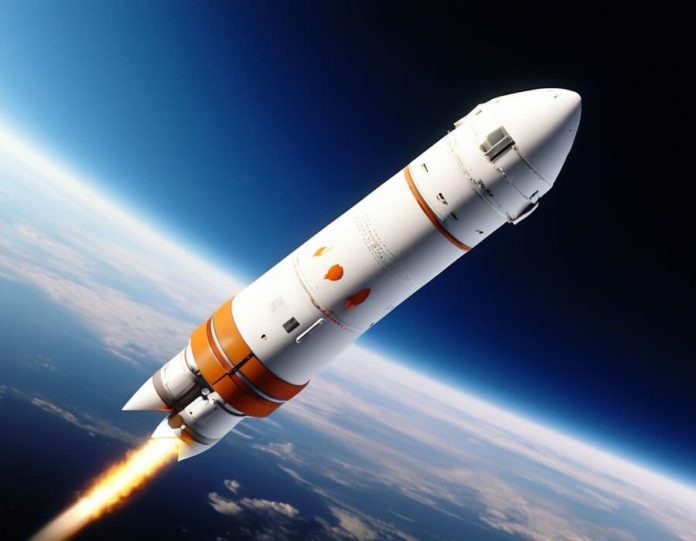Rockets have always been the backbone of space exploration, and their role in deep space probes and missions is both crucial and fascinating. These powerful machines are what allow us to send spacecraft far beyond Earth’s orbit, exploring the distant reaches of our solar system and even venturing into interstellar space. Let’s dive into how rockets are being used for these extraordinary deep space missions.
The role of rockets in deep space exploration
Rockets are the launch vehicles that propel spacecraft from Earth into space. Without them, sending probes and missions to deep space would be impossible. But getting a spacecraft into orbit is just the beginning; for deep space missions, rockets must be powerful enough to break free from Earth’s gravitational pull and set a course for distant destinations like Mars, Jupiter, or even the edge of the solar system.
Types of rockets used in deep space missions
1. Expendable Launch Vehicles (ELVs)
These are rockets that are used once and then discarded. They are designed to carry payloads, such as satellites or deep space probes, into space and then fall back to Earth or burn up in the atmosphere. ELVs have been the workhorses of space exploration for decades. Examples include the Atlas V, Delta IV, and the more recent Falcon 9, which has been used for a variety of missions, including those that go beyond Earth’s orbit.
2. Heavy-Lift rockets
For deep space missions that require carrying large payloads or sending probes to distant planets, heavy-lift rockets are essential. These rockets are designed to lift more weight than standard launch vehicles. NASA’s Space Launch System (SLS), for example, is a heavy-lift rocket that will be used for missions to the Moon, Mars, and potentially beyond. SpaceX’s Starship is another example, designed to carry massive payloads on interplanetary missions.
Rocket Technologies for Deep Space Missions
1. Chemical propulsion
Most rockets used for launching deep space missions rely on chemical propulsion. This involves burning fuel to produce the necessary thrust to escape Earth’s gravity. While highly effective for initial launch, chemical propulsion has limitations in terms of efficiency and the amount of fuel needed for long-duration missions.
2. Gravity assists
Deep space missions often use gravity assists to gain extra speed without using additional fuel. By flying close to a planet or moon, a spacecraft can use the gravitational pull of the body to slingshot itself towards its target. This technique, while not a rocket technology per se, is crucial in extending the reach of deep space probes.
3. Electric propulsion
For long-duration deep space missions, electric propulsion systems are becoming increasingly important. Unlike chemical rockets, which burn fuel quickly to generate thrust, electric propulsion systems, such as ion thrusters, produce a small amount of thrust over a long period. This allows spacecraft to gradually increase their speed, making them ideal for missions that need to travel vast distances over time.
4. Nuclear propulsion
Nuclear propulsion is a technology that could revolutionize deep space exploration. By using nuclear reactions to generate thrust, this type of propulsion could significantly reduce travel times to distant planets like Mars. While still in the experimental stages, nuclear propulsion holds great promise for future deep space missions.
Notable deep space missions using rockets
1. Voyager probes
Launched in 1977 by NASA, the Voyager 1 and Voyager 2 spacecraft were carried into space by Titan IIIE rockets. These probes were designed to explore the outer planets, but they have gone on to become the first human-made objects to enter interstellar space, sending back data from the edge of our solar system.
2. Cassini-Huygens mission
The Cassini spacecraft, launched by a Titan IVB/Centaur rocket, was sent to study Saturn and its moons. The mission was a collaboration between NASA, the European Space Agency (ESA), and the Italian Space Agency. Cassini spent over a decade exploring Saturn, sending back stunning images and valuable scientific data.
3. New horizons
New horizons was launched in 2006 aboard an Atlas V rocket, with the mission of exploring Pluto and the Kuiper Belt. After a nearly 10-year journey, New Horizons flew by Pluto in 2015, providing humanity with its first close-up images of the dwarf planet and its moons.
4. Mars Rovers
Rockets like the Atlas V and Delta II have been used to send various rovers to Mars, including the famous Curiosity and Perseverance rovers. These missions have greatly expanded our understanding of the Red Planet and continue to search for signs of past life.
The future of rockets in deep space exploration
As we look to the future, rockets will continue to play a pivotal role in deep space exploration. With missions planned for Mars, the outer planets, and even asteroids, the demand for more advanced and powerful rockets will only grow. Innovations like SpaceX’s Starship and NASA’s SLS are just the beginning. These rockets are designed not only to carry larger payloads but also to support human exploration of deep space.
One of the most exciting prospects is the potential for crewed missions to Mars. SpaceX’s Starship, for example, aims to carry humans to Mars and establish a sustainable presence on the planet. NASA’s Artemis program, which includes the SLS, plans to return humans to the Moon as a stepping stone for future Mars missions.
Rockets are the lifeline of deep space exploration, propelling our spacecraft to the farthest reaches of the solar system and beyond. From the early days of the space race to the ambitious missions of today, these powerful machines have made it possible to explore worlds we once only dreamed of. As technology continues to advance, rockets will enable us to venture even further, unlocking the mysteries of the cosmos and possibly paving the way for humanity’s future in space.













